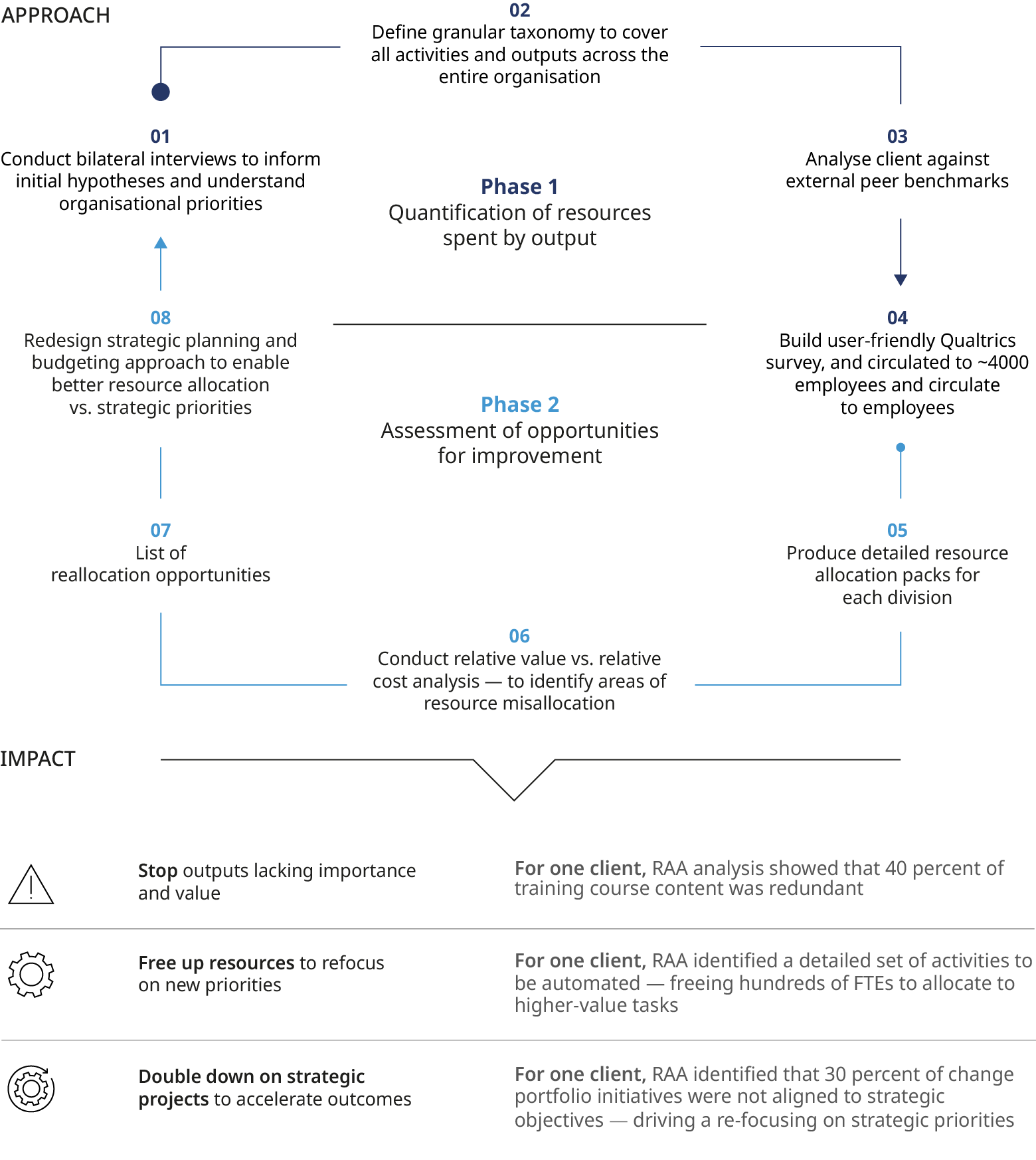This article was written with Owain Service from The Cognition Company.
When the biggest determinant of budget allocations is previous years’ spending, organisations will always struggle to provide adequate funding where it is needed most. Instead, a resource allocation analysis should be undertaken. This process will align spending with the top priorities of the organisation and allow them to make much more efficient use of available resources.
At a time when the everyday has already been thoroughly disrupted by a global pandemic, we believe there is no better time for large organisations like the UK government to take on this new approach.
The current approach to budgeting must change
In the autumn of 2021, the Chancellor of the Exchequer will conclude one of the most important, but least understood, processes in UK government: A comprehensive spending review.
This process sets the budgets of UK government departments for the following three years. It confers enormous power upon the Treasury, because it offers the opportunity to set up new funding streams and cull others. For these reasons, comprehensive spending reviews dominate decision-making processes in Whitehall for months.
You would have thought, then, that the decisions made during a comprehensive spending review should rely upon the objective merits of every given policy area. But instead, the most important factor in determining where money is spent is how much was spent in the previous year. Behavioural scientists call these ‘defaults’ and, once set, they are extremely difficult to dislodge.
Defaults are the pre-set courses of action that limit future decisions and opportunities unless actively challenged. They are like scaled-up versions of a common problem: Subscriptions for gyms, mobile phones, or apps that we have been meaning to cancel, but haven’t yet found the time for. Defaults are present in the private sector, too, for example employee wages are often based on the current year’s salary, plus an increment.
The problem with defaults in government spending is that, over time, more and more budget is allocated to past spending patterns. This makes it harder to make sure that funding is allocated to the most important current objectives of the organisation.
Budgeting by default also makes it much harder than it should be to find resources to bring about truly transformational changes to the way the organisation works, or to the services and products it provides.
How to break out of budgeting by default
There are two mechanisms for shaking an organisation out of its default settings and bringing about transformational change.
The first is an external shock that re-sets the defaults by forcing an overhaul of spending decisions that would have previously crept forward only incrementally. COVID-19 is one such event. It has already forced the UK government to fund huge new initiatives that would have previously been unimaginable. It will, in the coming months, force the re-examination of old spending decisions simply because the usual incremental increases or decreases will no longer be possible. This mechanism can result in re-prioritisation and transformation, but through necessity, not choice.
The second mechanism is more subtle, but in some ways more radical, and importantly is within the control of the organisation: Changing the way that spending decisions are made, and budgets are allocated. This can be achieved through a resource allocation analysis. This process starts by examining how much time and resources are spent on different activities and outcomes and compares against the prioritised aims and objectives of the organisation. See Exhibit 1 for detail.

Put the money where the priorities are
What resource allocation analyses reveal are swathes of activities which are given too much funding – like the gym membership you never got around to cancelling – and those without enough – like the organic fruit basket you couldn’t afford because of the gym membership.
A resource allocation analysis should be used to ensure that the government’s policy priorities get the money they deserve. It will make much more efficient use of available resources, for example by exposing how some activities, like answering parliamentary questions or managing procurement contracts, are given different levels of resource in different parts of the governmental estate. A resource allocation analysis also frees up resources for the more radical transformational programmes that sometimes do not get the funding they merit.
At a time when the balance of resources and ways of working across many parts of government have been hit by shocks to the status quo, the time is right to harness the power of resource allocation analyses to enable faster transformation and step changes in performance.
Resource allocation analysis creates change, faster
A resource allocation analysis creates the opportunity for step changes in spending and effort across different outputs, linked to strategic priorities. It can put real financial firepower and flexibility behind well-intentioned talk of organisational agility. In doing so, it will allow government departments and agencies to transform faster and act with the dynamism required of modern government.
By introducing tools like the resource allocation analysis to the process of government spending, we can achieve something that has never been done before: Spend money on the current priorities, based on the current evidence of what works.

